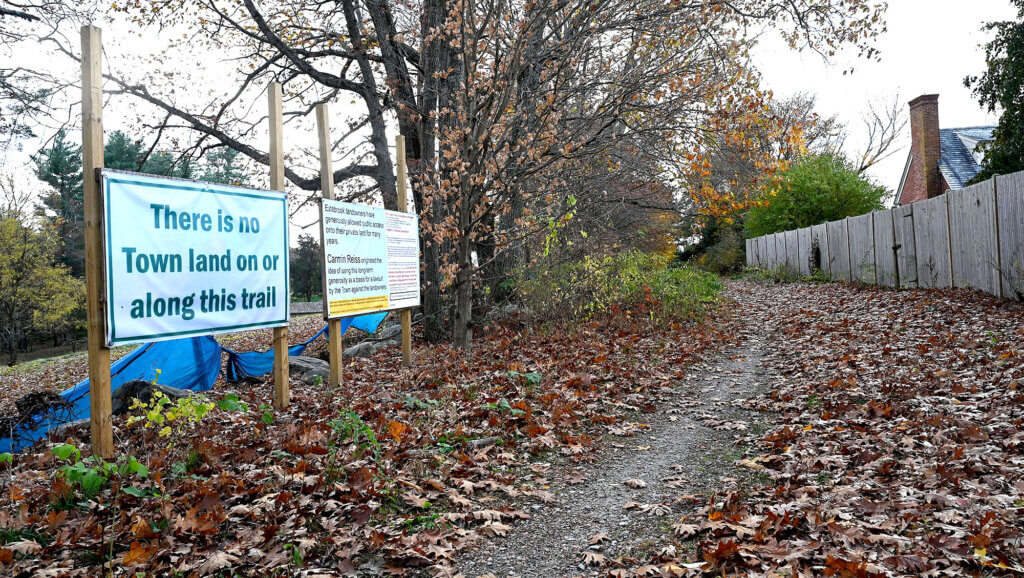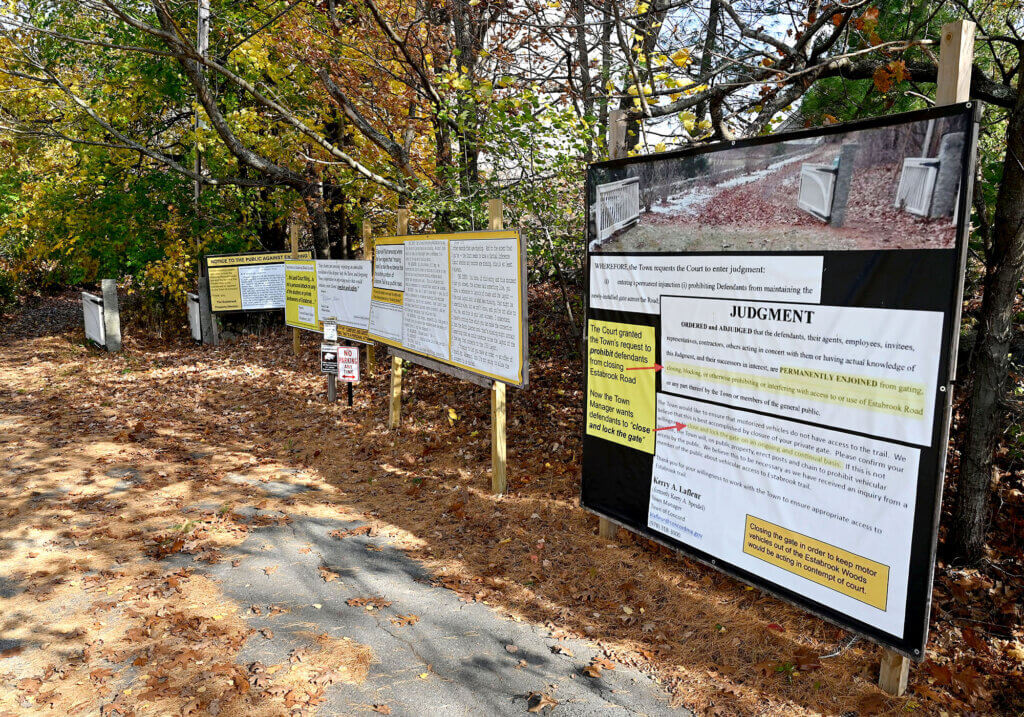By Erin Tiernan — Erin@concordbridge.org
What happens on Estabrook Road is “likely” to stay on Estabrook Road, town officials said in the wake of a court decision affirming the public’s right to access the long-discontinued throughway.
The scenic, wooded 1.8-mile trail at the center of the case has become the bucolic backdrop to a battle over competing private property rights, public access interest, and historic local government actions.
For now, the town has won its seven-year quest to permanently enshrine the public’s right to traverse the northern, unpaved portion of Estabrook Road after surrounding private property owners tried to bar access in 2017.
But lawyers in other Massachusetts communities say the October Appeals Court decision raises questions about public access claims on other roads “discontinued” via the same archaic mechanism.

Roads less traveled
There are dozens, and perhaps even hundreds, of examples throughout the Commonwealth — including four others in Concord — where towns relied on county authorities to decommission roads until Massachusetts abolished most of its county governments just before the turn of the century.
Officials in other towns say the Estabrook decision sets a precedent for public access to all of these former rights-of-way.
But Concord officials say that’s unlikely.
“The Estabrook Road facts are unique to Estabrook Road,” Town Manager Kerry Lafleur said in response to questions from The Concord Bridge. “They are not likely to be repeated for other roads without a history of public pedestrian use.”
Four other Concord roads were discontinued either partially or entirely by a vote of the now-defunct Middlesex County Commissioners between 1929 and 1981, according to a review of public records. They are Great Meadows Road, Powder Mill Road, East Acton Road, and Pond Lane.
They touch more than 50 private, commercial, and public properties, and the land once used as a public road has — in most cases — been treated like private property in the decades since discontinuance.
A lawyer for Estabrook landowners argued the ruling ”throws the status of countless long-considered discontinued and private ways into question — confounding title examiners, property owners, municipal bodies, and surveyors.”
The property owners lost their appeal last month. In recent weeks, they have repeatedly declined to speak to The Bridge on the record while considering another appeal to the state’s high court.

Setting precedent
A lawyer for North Andover filed a brief in support of Estabrook Road landowners. She said the court’s decision now tasks towns like hers with tying up history’s loose ends.
There are 14 North Andover roads that town counsel Christine O’Connor says could “suddenly” have a claim for public use unless the town acts preemptively.
“The concern that I think towns should be considering is what then do you do where there may be a current property owner whose building may be sitting on land that legally now has been judged to be still open for the public?” O’Connor recently told The Bridge.
“Or a homeowner whose front lawn is in part now a public trail? What do you do if there’s an in-ground pool that’s sitting on such a discontinued way?” O’Connor asked. “Or if there’s a fenced yard or a private business that has its own parking lot in one of these discontinued ways?”
Representatives of Franklin County, serving 25 other towns, signed on to the North Andover brief echoing the concerns.
But Lafleur said she isn’t worried about an Estabrook precedent opening a can of worms in Concord — or elsewhere.
“Towns that are concerned about these issues have very easy remedies to disclaim any public access that’s left under the current statutes,” she said, referencing their option to cut off access via a Town Meeting vote.

A ‘different’ case
Lafleur also argued that the Estabrook case is unlikely to be repeated because “the continuous pedestrian access to Estabrook Road makes this case different from the [other] roadways.”
Estabrook Road was discontinued in 1932 via a decision by the now-defunct Middlesex County Commissioners. Since there was no subsequent Town Meeting vote to relinquish the public’s right of access, in 2017, the town sued the eight surrounding property owners. They had shut off access to the trails following issues with unleashed dogs and with cars blocking private driveways and preventing emergency vehicle access.
A 2022 Land Court ruling affirmed the public’s right to use the northern section of Estabrook Road, citing a history of access dating back to the 1700s that continued in cooperation with private property owners even after the road was discontinued.







